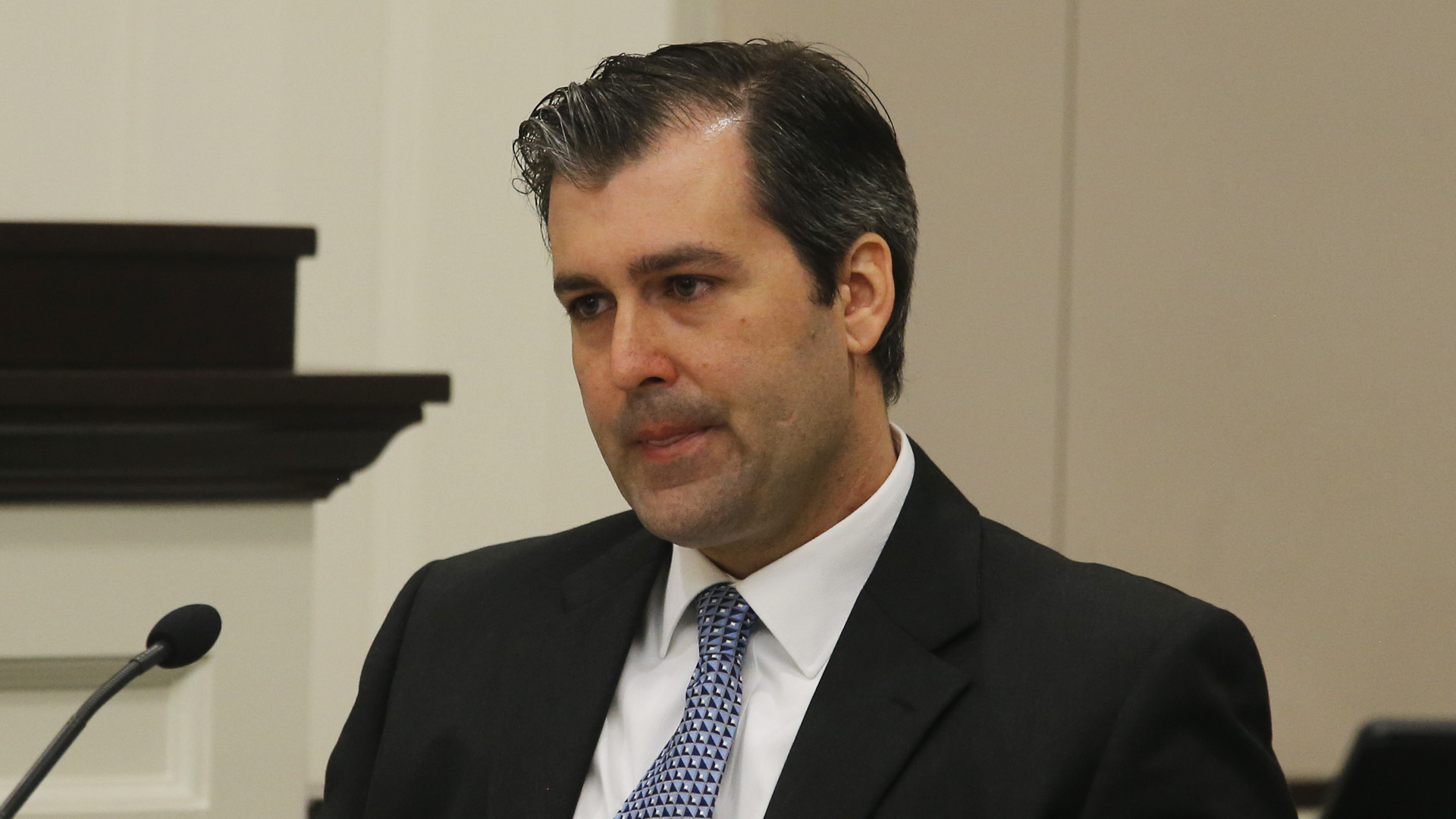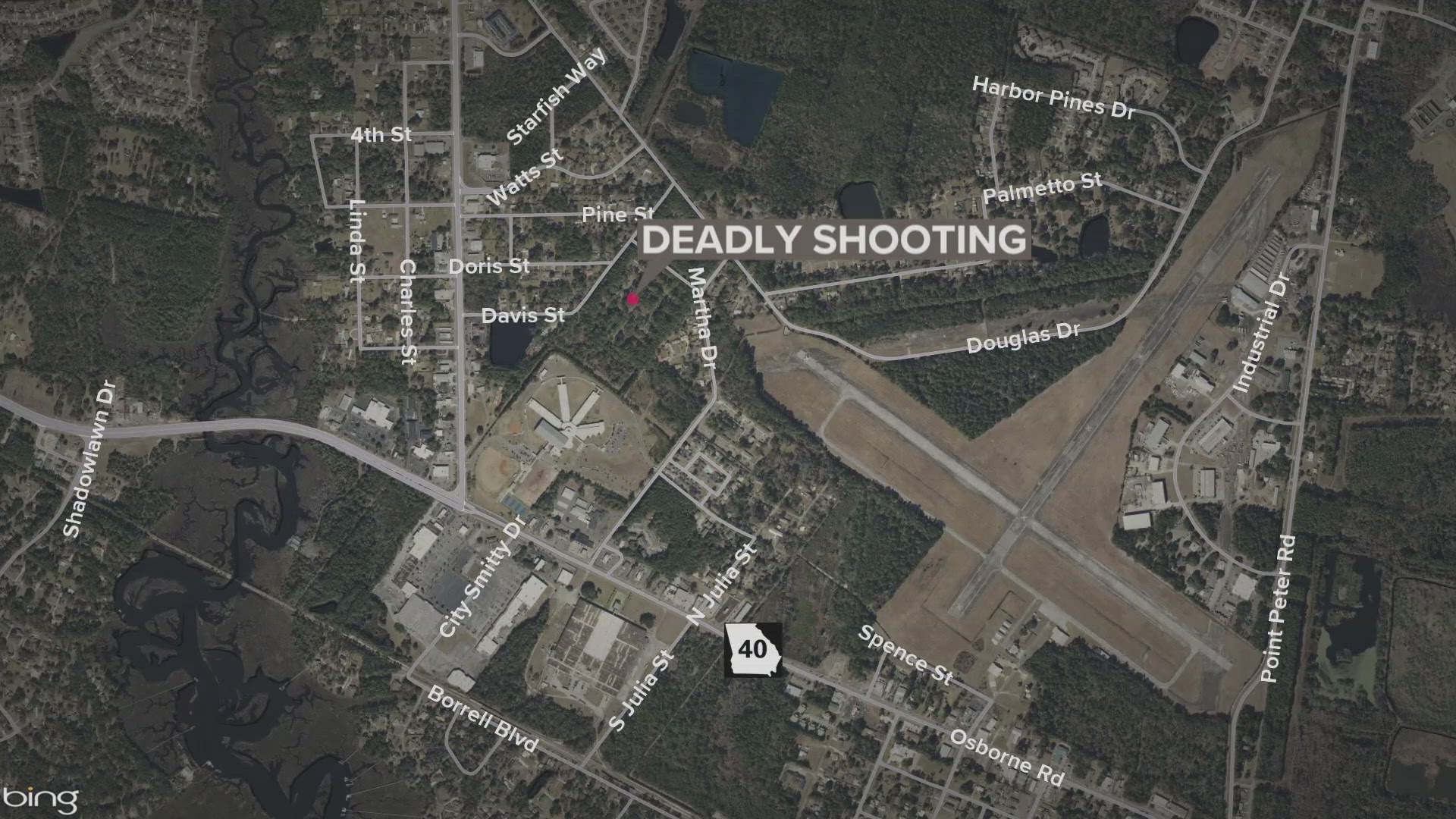Charleston, SC (WLTX) - A judge has declared a mistrial in the case of Michael Slager, the ex-South Carolina police officer who killed a man following a traffic stop, a case that gained attention across the country.
Judge Clifton Newman reluctantly made the decision Monday afternoon after the jury in the case couldn't reach a unanimous verdict. The jury was considering both a murder and a voluntary manslaughter charge.
"Final note from the jury says we as the jury regret to inform the court that despite the best efforts from all members, we are unable to come to a unanimous decision in the case of the State Vs Michael Slager," says Judge Newman.
Jurors could be seen wiping their tears in the courtroom as Judge Newman officially declared the mistrial.
Slager's wife was also emotional and could be seen leaning over a pew in the courtroom crying.
Both Solicitor Scarlett Wilson and defense attorney Andy Savage also spoke to jurors, thanking them for their service.
Solicitor Wilson also hinted at the possibility for a new trial in this case.
" We have been blessed with a good shepherd with this trial and he has kept this trial on track and we have been so lucky to have Judge Newman and hopefully he will stick around for the next go round," says Newman.
The jury sent the judge the note about their decision around 3:30 p.m., and five minutes later, Newman made his ruling.
The panel---six white males, five white females, and one black man--spent nearly 20 hours over four days deliberating. Newman said it was the longest deliberation he'd seen in his career.
After the ruling both the family of Walter Scott and the family of Michael Slager were emotional in the courtroom. Anthony Scott, Scott's older brother, was seen saying "It ain't over," while looking in the direction of the Slager family.
Both families were escorted from the courtroom separately.
Earlier in the day, a note was sent to Judge Newman asking a series of questions, including why was voluntary manslaughter offered in addition to murder and is self-defense applied the same for a police officer as an ordinary person. He explained to them that South Carolina law allows for a lesser charge to be introduced if there is evidence of that charge.
Judge Newman also told jurors that there is only one law for self-defense and it is included in their jury instructions. Jurors were asked to see if the defendant was without fault, in imminent danger and had no other way out.
On Friday jurors initially told the court they were deadlocked, after one lone juror told the court that he could not come to a guilty verdict.
The over a month long trial began back on October 31, and featured witnesses including the man who shot a now infamous cell phone video, to DNA experts, to the defendant himself.
Back on April 4th of 2015, Slager--who was then working for the North Charleston police department-- pulled 50-year-old Walter Scott over for a failed brake light. Scott was in the process of buying a used Mercedes Benz from his neighbor and did not have insurance or registration in his name for the car.
When asked by Slager for his information, Scott stumbled over what to say.
As Slager was checking his information, Scott got out of the car, but after being asked to remain in the car, he got back in.
A few seconds later Scott ran from his car and Slager ran after him. Dashcam video captured the beginning of the chase, but the seconds following, as Scott and Slager ran 200 yards to a side street on Remount Rd in N. Charleston, are still a mystery.
Michael Slager has repeatedly said that he fired his Taser, with a cartridge attached, two times and got in a ground fight with Scott as he was trying to arrest him.
Cell phone video, from Feidin Santana, of the incident picks up at the tail end of the fight and then shows Scott running away as Slager fires eight shots, hitting Scott five times in the back.
Slager’s Testimony
Throughout the trial, jurors heard testimony from 55 witnesses from the state and the defense.
Michael Slager’s was possibly the most crucial testimony for the defense. Slager, who became emotional several times on the stand, went over the details of April 4th. He has never denied that he shot and killed Walter Scott and said he did so out of self defense.
Slager explained on the stand that he feared for his life believing that Scott was coming after him with his own Taser.
"I saw that Taser coming at me,” says Slager. “I knew I was in trouble, I knew I would be overpowered."
Slager also explained that he did what he was trained to do, use force until the threat stops.
Slager’s state of mind at the time of the shooting also came into question while he was on the stand.
“I was tired, I had just ran 200 yards, I was in a fight on the ground, Mr. Scott was coming at me with the Taser twice,” says Slager. “My mind was like spaghetti.”
Prosecutor Bruce DuRant said that Slager never told investigators that he was in a fight on the ground with Scott.
DuRant pointed out that Slager never said he was Tased by Scott.
The State’s Argument
Michael Slager was initially charged with murder in the shooting death of Walter Scott. Solicitor Scarlett Wilson explained to jurors on the first day of the trial that murder is the killing of another person with malice or aforethought.
Later in the trial a voluntary manslaughter charge was also introduced.
The murder charge carries a minimum of 30 years, while the manslaughter charge carries a minimum of two years in prison.
The State has argued that Slager showed malice by shooting Scott in the back while he was running away, not rendering aid when Scott was on the ground and by also dropping the Taser next to Scott’s body.
While on the stand, Slager explained that he was simply consolidating his equipment when he moved his Taser towards Scott’s body.
The State questioned 32 witnesses including South Carolina Law Enforcement (SLED) agents, forensic audio and video experts, family and friends of Walter Scott and Fedin Santana, the man who shot the cell phone video of the shooting.
While on the stand Santana said that he did not bring the cell phone video forward initially because he wanted to see what the N. Charleston Police Department reported.
When he saw that their story of self defense didn’t add up to what he saw he came forward.
“It was an injustice, what I saw,” says Santanta.
He took several steps to get the video to the family of Walter Scott and the media.
“The truth is the truth,” said Santana while testifying on the stand.
In closing arguments Solicitor Wilson spoke to the jurors about accountability.
She mentioned that Slager took a vow as an officer that “the protection of life should always take priority to the apprehension of criminals.”
The Defense’s Argument
From the start Michael Slager has said he acted out of self defense and within his training, when he shot and killed Walter Scott on April 4, 2015.
Defense attorney Andy Savage presented 23 witnesses on the stand. Several of them are members of law enforcement with the N. Charleston Police Department.
During their testimony, the officers explained that they were trained to handcuff a suspect after a use of force incident because there could be a possibility that the force didn’t impact the suspect, creating another opportunity to get away.
Slager was under strong scrutiny from the State when he handcuffed Walter Scott’s body while he was face down on the ground.
The officers on the stand also explained that they would have also shot a suspect who was fleeing, if they believed he was still a threat.
The first shot from Slager came when Scott was nearly 18 feet away. The shots continued until Scott fell, 50 feet away from Slager.


